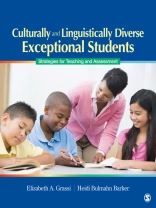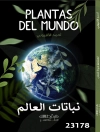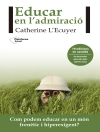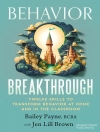Connects theory to practice while presenting foundational teaching and assessment practices for CLDE students
Practical in nature and designed with an eye toward universal design for learning, this text brings together foundational information from special education and ELL/bilingual fields to help teachers address the specific needs of culturally and linguistically diverse exceptional (CLDE) students.
Key Features
- Case studies from teachers, students, and parents describe the personal challenges of CLDE students
- Authentic student language examples illustrate the concepts described and make practical connections to the research discussed
- Activities for further understanding allow students to review key points and connects theory to classroom practice
- Password-protected instructor resources include Power Point lecture slides, sample syllabi, and Web resources.
- An open-access student study site provides online video clips of teachers in action, which exemplify different strategies and are accompanied by critical thinking questions from the authors. Students can also access additional case studies and relevant SAGE journal articles from the study site.
Зміст
Forward
Preface
1. Introduction
Establishing the Rationale: Demographics of Students in Our Classrooms
Setting the Context: Laws That Impact Program Options for CLDE Students
New Directions in Teacher Training
Summary
Activities for Further Understanding
SECTION I: Understanding Student Backgrounds
2. Collaborating With Families
Creating Relationships With CLD Families
Considerations of Culture When Working With CLD Families
Empowering Families
Summary
Activities for Further Understanding
3. Understanding Language Acquisition
Interlanguage: The Journey From First Language to Second Language Proficiency
Second Language Acquisition Theories
Factors Affecting Second Language Acquisition
Summary
Activities For Further Understanding
4. Understanding Fluency
Proficiency: What Does It Mean to Be ‘Fluent’ in a Language?
Cummins′s BICS and CALPS Model
Canale and Swain′s Four-Part Model of Communicative Competence
Summary
Activities For Further Understanding
Section II: Strategies for Assessment and Planning for Instruction
5. Strategies for the Assessment Process
The Instruction/Assessment Cycle in Special Education
Thes Eligibility Process and CLDE Students
Tailoring Assessment Procedures for CLDE Students
Summary
Activities for Further Understanding
6. Collaboration Skills
Diversifying the Concept of Collaboration
Foundations of Collaboration
Creating a Collaborative School Culture
Co-Teaching as Collaboration
Working With Paraprofessionals
Summary
Activities For Further Understanding
7. Planning Instruction
Planning for Instruction
A Philosophy of Differentiation
Universal Design for Learning
Application of Differentiation and UDL: Backward Design Planning
Planning Pyramid for Instruction and RTI
Planning and Classroom Management
Summary
Activities For Further Understanding
8. Culturally Relevant Pedagogy
Introduction and Definitions
Develop and Maintain Strong Teacher-Student Relationships
Emphasize Consistent Dialogical Interaction
Incorporate and Validate Space for Student Voice and Identity
Make Content Relevant to All Students in the Classroom
Summary
Activities For Further Understanding
Section III: Strategies for Content and Language Acquisition
9. Teaching Strategies: An Integrated Content-Language Approach
Strategy 9.1: Making the Content Comprehensible With the 3-Way Model
Strategy 9.2: Front-Loading and Emphasizing the Academic Language and Key Concepts of the Lesson
Strategy 9.3: Accessing and Explicitly Teaching the Cultural and Content Schemata Needed for the Lesson
Strategy 9.4: Allowing Students Time to Clarify in the First Language
Strategy 9.5: Helping Students Organize and Access Academic Information: Explicit Strategy Instruction
Summary
Activities For Further Understanding
10. Strategies for Promoting the Participation
Strategy 10.1: Creating a Comfortable Classroom Environment
Strategy 10.2: Increasing Interaction in the Classroom: Heterogeneous Groupings
Strategy 10.3: Encourage Extended Participation From CLDE Students
Summary
Activities For Further Understanding
11. Strategies for Explicit Grammar Instruction
Language Errors
Form-Focused Instruction
Different Strategies for Teaching Grammar
Summary
Activities For Further Understanding
Section IV: Strategies for Literacy Instruction
12. Strategies for Teaching Reading
Reading Components and CLDE Students
Language and Literacy
Activities to Increase Background Knowledge
Reading Strategy Instruction
Strategies to Help Students Analyze, Organize, and Interact With the Content
Summary
Activities For Further Understanding
13. Strategies for Teaching the Writing Process
Written Expression Challenges for Students With Special Needs
Written Expression Challenges for CLDE Students
Explicit Instruction of the Writing Process
Example of Explicit Instruction of the Writing Process
Summary
Activities for Further Understanding
14. Challenges When Teaching Writing
Specific Writing Challenges for CLDE Students
Summary
Activities For Further Understanding
15. Strategies for Written Error Correction
Considerations When Correcting CLDE Student′s Writing
Error Correction
Summary
Activities For Further Understanding
Про автора
Heidi Bulmahn Barker is Associate Professor of elementary and special education at Regis University. Prior to joining the Regis faculty, Heidi worked in both special and general education teaching positions.











